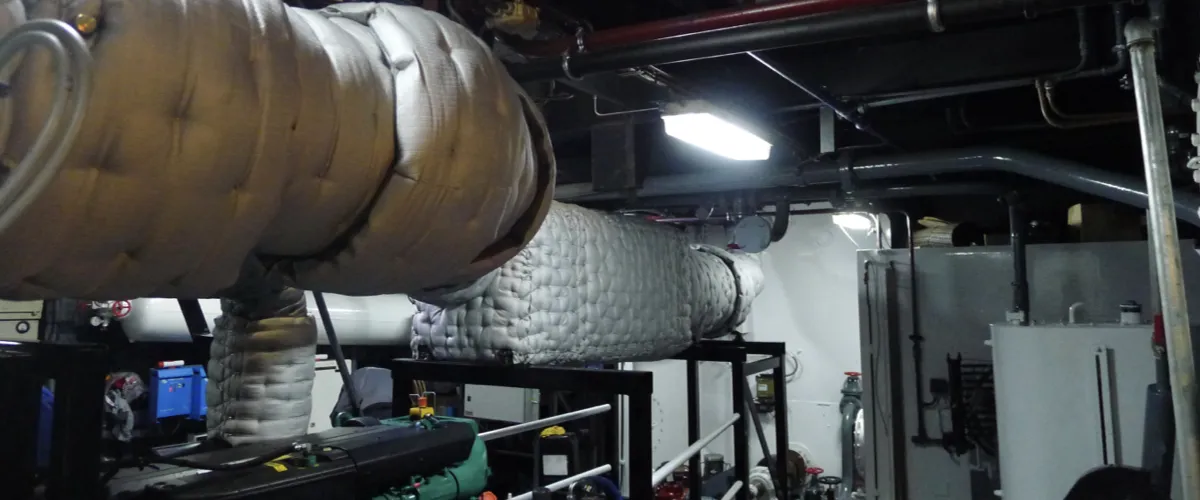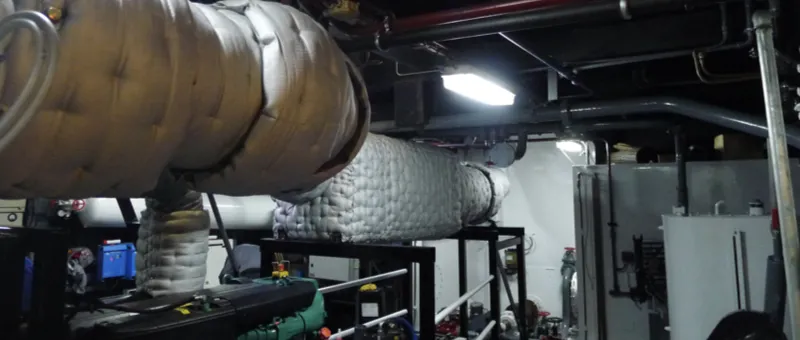SRVB Subsidy 2025: How the Inland Vessel Sustainability Subsidy (SRVB) Works
Author: Jeroen Berger • Publication date:
With the Inland Vessel Sustainability Subsidy (SRVB), commonly referred to as the SRVB subsidy, shipowners and inland shipping operators can receive up to €400,000 in subsidies for replacing outdated ship engines or installing emission-reducing technologies. This reduces emissions of nitrogen oxides (NOx), harmful gases that contribute to air pollution and smog, and particulate matter (PM), which lowers air quality. Additionally, it improves energy efficiency and makes inland vessels more future-proof.
What Does the SRVB Subsidy Entail?
In 2025, a budget of €19 million is available for the SRVB subsidy. Per inland vessel, up to 20% of the total investment costs (including installation) is reimbursed, with a subsidy cap of €400,000 per ship. SMEs benefit from higher subsidy percentages: medium-sized enterprises receive +20 percentage points extra (up to 40%), small enterprises receive +30 percentage points extra (up to 50%), and zero-emission vessels receive an additional +10 percentage points.
The application period runs from January 13, 2025 (09:00 CET) to October 31, 2025 (17:00 CET). Applications are processed on a first-come, first-served basis.
Which Investments Qualify?
The Inland Vessel Sustainability Subsidy (SRVB) focuses on emission reduction in inland shipping and supports:
- replacement of engines with efficient Stage V engines in the following categories:
- IWP (Inland Waterway Propulsion): for main propulsion;
- IWA (Inland Waterway Auxiliary): for auxiliary engines and generators;
- NRE (Non-Road Engine): industrial engines suitable for specific maritime applications.
- emission-reduction technologies:
- SCR catalysts (Selective Catalytic Reduction) for NOx reduction;
- diesel particulate filters to reduce PM emissions, often combined with SCR;
- electrification of the propulsion system, where a battery- or fuel cell-powered electric motor replaces the traditional combustion engine.
Step-by-Step Guide: How to Successfully Apply for the SRVB Subsidy
Step 1: Check Whether Your Vessel and Investment Qualify
To qualify for the SRVB subsidy, your vessel must:
- be active in inland shipping and have a valid inland navigation certificate;
- operate for at least 60 sailing days per year on the Dutch inland waterway network (before and after the retrofit);
- be fitted with an eligible engine replacement or retrofit (Stage V engine, SCR catalyst, diesel particulate filter, or electrification);
- have an intact engine at the time of application;
- a maximum of three applications per company per year applies.
Use the official SRVB eligibility criteria from RVO.nl to verify whether your investment meets the requirements.
Step 2: Gather Quotes and Required Documents
To ensure a smooth application process, you must submit the following documents:
- quotes for the purchase and installation of the engine or emission-reducing technology. Ensure a detailed quote with all cost items specified;
- inland navigation certificate as proof that your vessel meets regulations;
- sailing time records (e.g., an extract from your ship’s logbook) to demonstrate that your vessel has operated at least 60 sailing days per year;
- Clean Vessel Declaration (Schoon Vervoermiddel):
- for cargo vessels ≥39 meters, a simple calculation suffices;
- for passenger vessels and vessels <39 meters, additional supporting documents may be required;
- emission reduction calculation (if your vessel is being retrofitted with an SCR catalyst or hybrid propulsion system).
Step 3: Apply for eHerkenning in Time (Level 2+)
The application must be submitted via mijn.rvo.nl, requiring eHerkenning Level 2+. This process may take several days to weeks. Without eHerkenning, you cannot submit a subsidy application, so arrange this in time.
Step 4: Submitting the Subsidy Application (From January 13, 2025, 09:00 CET)
The application period for the Inland Vessel Sustainability Subsidy (SRVB) opens on January 13, 2025, at 09:00 CET.
To submit your application correctly:
- Go to mijn.rvo.nl;
- Log in with eHerkenning (Level 2+);
- Complete all mandatory fields and upload the required documents;
- Carefully review your application and submit it;
- Keep the confirmation of submission as proof.
Step 5: Review by RVO and Submission of Additional Information
Once submitted, the Netherlands Enterprise Agency (RVO) will assess your application for completeness and ranking. If approved, you will receive a subsidy decision outlining the granted amount and execution conditions.
If additional proof is required, RVO may request further documentation. You will have only a few business days to respond.
Ensure that you remain reachable and check your email regularly to promptly address any requests and avoid delays.
Step 6: Execution and Finalization of the Subsidy
Once your SRVB subsidy is approved, you have a set period to complete the investment. Check your subsidy decision for the exact deadline and ensure that the work is completed on time.
- Complete the investment. Have the new engine or emission-reduction technology installed according to the subsidy conditions.
- Collect and retain all relevant supporting documents. Keep invoices, installation reports, and photos of the retrofit carefully stored.
- Submit the finalization request. Once the work is completed, submit a finalization request via mijn.rvo.nl to receive the final subsidy payment.
RVO may conduct an inspection to verify that the investment has been carried out correctly. Ensure that your documentation is complete and submitted on time.
Common Mistakes in SRVB Subsidy Applications (And How to Avoid Them)
A small mistake can result in rejection of your subsidy application. Avoid these common mistakes to increase your chances of approval.
- Submitting too late: The €19 million budget is allocated on a first-come, first-served basis. Apply as soon as possible (January 13, 2025, 09:00 CET).
- Incomplete documents: Applications must include a valid quote, an inland navigation certificate, and proof of at least 60 sailing days per year.
- No valid eHerkenning (Level 2+): Applying for eHerkenning takes time. It should be requested at least a month in advance.
- Signing contracts too early: The subsidy application must be submitted before signing a final contract with a supplier.
- Poor communication after submission: RVO may request additional documents. Failing to respond in time can lead to rejection.



